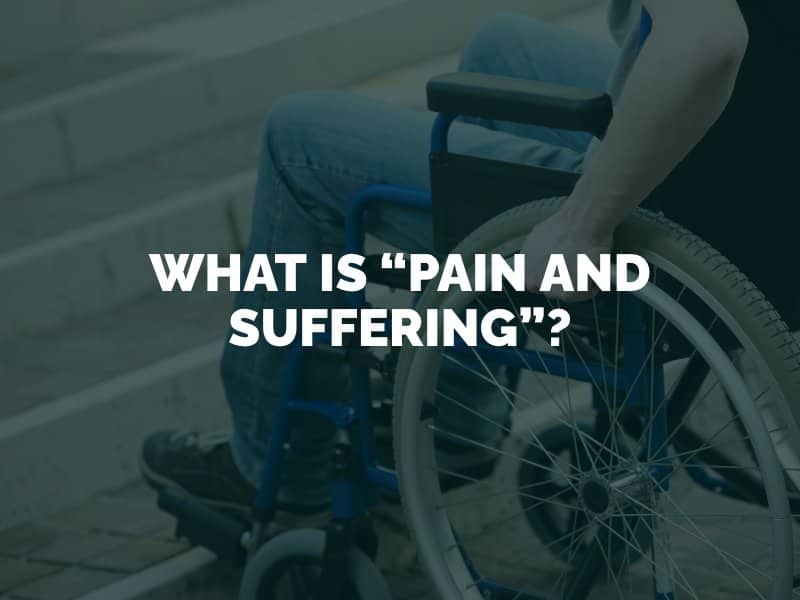People who are injured in accidents often experience pain and suffering associated with their injuries. While it may not be possible to explicitly measure how much pain and suffering has been experienced by the plaintiff in a personal injury case, pain and suffering is still a key aspect of most personal injury claims. By understanding what pain and suffering is and how it is assessed from a legal perspective, you can better recognize what level of compensation you are due in your claim.

Pain and suffering can occur in the mind and in the body. Therefore, personal injury lawyers often divide the pain and suffering that their clients experience into these two categories when assessing damages. Here is what each category of pain and suffering includes:
Your actual injuries are sure to cause significant pain. The amount of pain you experience typically depends on the severity of said injuries and the effectiveness of treatment. This category of damages does not only include the pain and suffering you have faced at the time you file your claim. It also features effects you will likely experience in the future due to the actions of the defendant.
As a byproduct of injuries caused by a defendant’s negligence, you may also experience mental distress, pain, and suffering. How pain is processed varies from person to person, but mental pain and suffering can manifest in several different ways. Some examples of mental pain and suffering you could experience following an accident include:
If your injury is very severe, there are other manifestations of pain and suffering to be concerned about as well. For example, someone who suffered a debilitating injury may spiral into depression due to their emotional distress. Likewise, severe mental disorders like PTSD can develop and create further issues. People often need assistance from doctors and lawyers to accurately articulate the mental pain and suffering they are experiencing, so do not hesitate to get in touch with a personal injury attorney in Denver who can help you get started with the process.
Defining someone’s pain and suffering is not an exact science. Judges do not have a set of guidelines are charts that dictate exactly what compensation someone is owed in association with pain and suffering that defendants have caused them. Instead, juries are encouraged to use common sense and their experience to determine an amount that would be reasonable.
In some instances, there is a multiplier that can be used to calculate pain and suffering, but this is not always used. The multiplier basically multiplies the total of the plaintiff’s special damages, which include medical bills and lost earnings, by a multiplier that falls between 1.5 and 4. The numbers are based on a scale that is used to rate the plaintiff’s pain and suffering.
For example, an attorney could use a “two” to signify a person’s pain and suffering level. Suppose that person has $40,000 in special damages. Using that multiplier of “two,” their pain and suffering damages would be approximately $80,000. Other factors can impact the amount of compensation you are due for your pain and suffering, so it is essential that you contact a lawyer to help you properly calculate your damages.
The financial compensation, or damages, available in a personal injury claim in Colorado are divided into two main categories: compensatory and punitive. Compensatory damages are those assigned to a plaintiff or filing party to make up for the losses suffered, while punitive (or exemplary) damages are designed to punish a defendant for egregious acts of wrongdoing.
Within the category of compensatory damages are economic and noneconomic damages. Economic are the financial losses the victim suffered, such as medical bills and lost wages. Noneconomic damages, on the other hand, are those that are invisible or intangible. They are also referred to as “pain and suffering.”
Pain and suffering in a personal injury case can refer to a wide range of general damages endured by an accident victim due to someone else’s negligence or lack of appropriate care. It can cover many negative feelings, sensations and experiences, including:
This is not a definitive list; any adverse impacts caused to a victim’s life because of a preventable accident could be included in a claim for pain and suffering in Colorado.
Pain and suffering is a critical component of any personal injury case. To get the most from your personal injury claim, contact Fang Accident Lawyers to have your case fully evaluated today. You can reach out by using the contact form on this page.